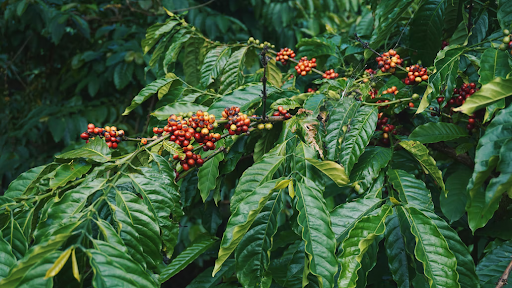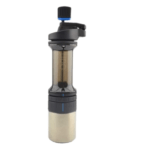Where Do Coffee Beans Come From?
Coffee makes the world go round. It’s become a staple in our everyday lives; however, how many of us have actually stopped for a moment and asked ourselves, where do coffee beans come from?
Learning the answer to this question will make you appreciate that cup of joe you drink in the mornings just a little bit more. The process of getting these beans to your kitchen is complex, but we’ll break it down for you here.
Let’s get started!

The Short Answer
Coffee originated from Ethiopia – a country in eastern Africa. Imagine being the country that discovers one of the most popular beverages in the world? While discovered in the Kaffa region, some regions of this country continue to harvest java beans from coffee plants growing wild.
More specifically though, coffee comes from a bush-like plant that grows very tall. Farmers usually trim these plants to around 5 feet to keep them manageable. The plant grows bunches of cherries, each cherry holding two java beans.
Where is Coffee Grown?
Coffee is grown in the countries that surround The Bean Belt. This is the name given to the collection of countries that produce the majority of coffee beans. This is an area around the equator between the Tropic of Cancer and the Tropic of Capricorn.
These countries include Colombia, Vietnam, Brazil, Indonesia, among others. Growing conditions here are ideal for coffee plants. And, believe it or not, the location where java beans are grown directly impacts taste—climate, soil type, and elevation all impact flavor.
How Long Does It Take for a Coffee Plant to Grow?
How are coffee beans grown? Well, a java bean is actually a seed. It’s planted and grows into a plant. It typically takes one full year for the coffee plant to flower. Then, it takes up to four years for it to start bearing fruit. Once the cherries have ripened (look for a dark red color), you can harvest them. You’ll find two beans in each cherry.
Understand that growing your own coffee plant takes patience. You need to learn to enjoy the process of growing, not the gathering. Also, be sure your plant is away from children, pets, and pests. There’s a lot that goes into consideration when growing your own plant, which is why this task is usually left to farmers.
However, if you’re a coffee farmer, you know that it takes around ten years for the plants to start producing beans on a commercial level. And the general lifespan of these plants is between 30-40 years (more depending on the care they’re given).
Types of Coffee Beans
There are over 120 varieties of java plants. Each produces a specific type of bean; however, the majority of the coffee that we like to consume comes from two variants: Robusta and Arabica.
Arabica
Arabica is also known as Coffea Arabica and is believed to be among the first coffee species ever grown. These beans are oval in shape and larger than Robusta beans. They offer complex flavors and tend to be sweeter. You’ll find fruity and floral hints in Arabica beans; however, note that their acidity levels are high and offer low caffeine content.
Arabica is generally more expensive than Robusta because it requires very specific cultivation requirements. Weather and altitude are very important in its cultivation. Coffea Arabica is grown at altitudes between 500m and 2500m. These altitudes make Brazil the largest producer of Arabica coffee.
Robusta
Robusta is also known as Coffea Robusta or Coffea Canephora. You’ll find these coffee plants in Africa, Indonesia, and Vietnam. Coffee beans are lighter than Arabica ones and are more circular.
Robusta has lower acidity levels when compared to Arabica, making it not as sweet. You can expect tones of wood when drinking Robusta. It’s popular among espresso lovers because of its rich flavors and high caffeine content.
The Robusta plant is grown in altitudes no higher than 1000m. They are grown much quicker than Arabicas and are less vulnerable to pests. Weather conditions aren’t as strict, a big reason why they’re usually cheaper than Arabicas.
Decaf Coffee Beans
Did you know that there is no such thing as decaffeinated beans?
Coffee beans naturally contain caffeine. It’s impossible to harvest caffeine-free beans. Instead, beans are decaffeinated by extracting the caffeine from them. This is done by soaking them in two solvents: methyl chloride and ethyl acetate.
The Takeaway
Coffee beans have a long history. They were discovered in Ethiopia and are continuously grown in countries that surround The Bean Belt. Perhaps many of us harvest our own beans. If this is the case, you’ve probably noted it’s a tedious process that offers results worth waiting for.
So, the next time someone asks where does coffee come from, you’ll be able to confidently answer that they come from the coffee plant (a large bush). These plants are grown all over the world, most likely in Central/South America, Asia, and Africa. This plant flowers and produces bunches of cherries. It’s in the center of these cherries that we’ll find coffee beans.





